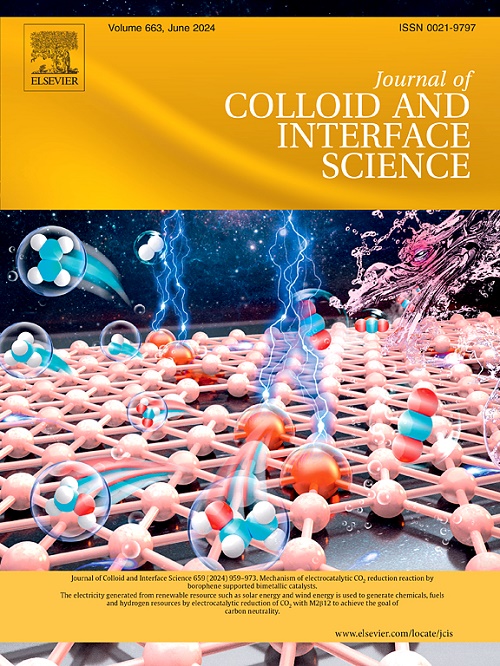Enhanced chemodynamic porphyrin-modified magnetite nanoagents: A triple-action strategy for potent antimicrobial therapy and wound healing
IF 9.4
1区 化学
Q1 CHEMISTRY, PHYSICAL
引用次数: 0
Abstract
The rise of drug-resistant bacteria, including multidrug-resistant (MDR) strains, has exposed the limitations of current antibiotic treatments. Chemodynamic therapy (CDT) has emerged as a promising approach due to its ability to generate reactive oxygen species (ROS) through Fenton or Fenton-like reactions in infection microenvironments (IMEs). However, the short lifespan, limited diffusion range of ·OH, and restricted variety of ROS reduce the effect of CDT. This study developed amine porphyrins (TAPP)-functionalized Fe3O4 nanoparticles (Fe3O4@TAPP NPs) as a multifunctional antibacterial platform. The TAPP layer can not only trap bacteria through electrostatic attraction in acidic environments but also increase the localized heat upon near-infrared (660 nm) excitation, reducing the effective action distance and boosting the production rate of ·OH. Notably, TAPP was covalently bonded to Fe3O4 nanoparticles via its amine groups and the carboxylic groups on Fe3O4, preventing TAPP self-aggregation under physiological conditions, and preserving the PDT effect. Therefore, the TAPP layer on Fe3O4 nanoparticles performs three functions, resolving the three limitations simultaneously to enhance CDT in a triple-action strategy. The developed Fe3O4@TAPP NPs exhibit improved antibacterial efficiency both in vitro and in vivo. Overall, this study provides an innovative strategy to construct an antibacterial nanoplatform for synergistically enhanced CDT antibacterial treatment, exhibiting great potential for future biomedical applications.

求助全文
约1分钟内获得全文
求助全文
来源期刊
CiteScore
16.10
自引率
7.10%
发文量
2568
审稿时长
2 months
期刊介绍:
The Journal of Colloid and Interface Science publishes original research findings on the fundamental principles of colloid and interface science, as well as innovative applications in various fields. The criteria for publication include impact, quality, novelty, and originality.
Emphasis:
The journal emphasizes fundamental scientific innovation within the following categories:
A.Colloidal Materials and Nanomaterials
B.Soft Colloidal and Self-Assembly Systems
C.Adsorption, Catalysis, and Electrochemistry
D.Interfacial Processes, Capillarity, and Wetting
E.Biomaterials and Nanomedicine
F.Energy Conversion and Storage, and Environmental Technologies

 求助内容:
求助内容: 应助结果提醒方式:
应助结果提醒方式:


